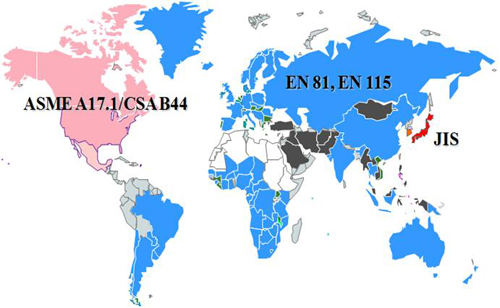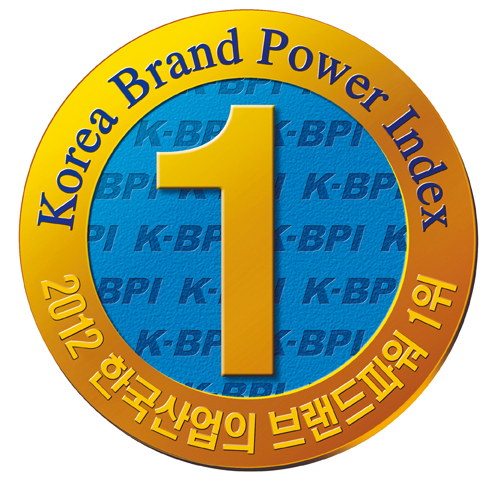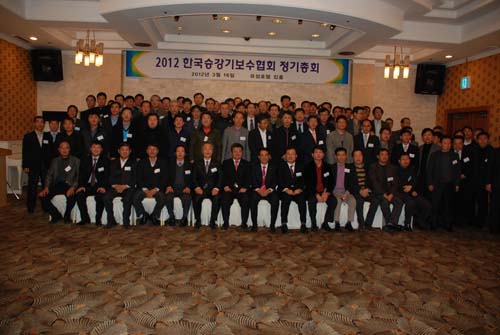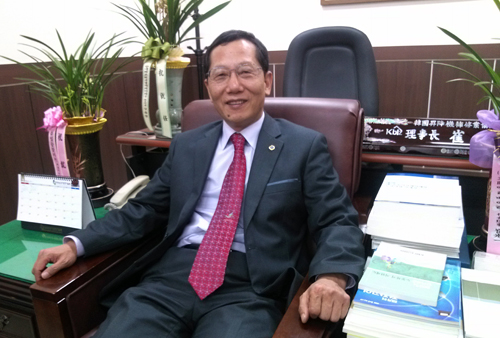|
|
|
Korea Land Institute China's Regional Policy, 4+2 Regional Development Strategy is the Basic Framework Strategies for entering and settling in popular countries should be prepared in line with government policies 2012/04 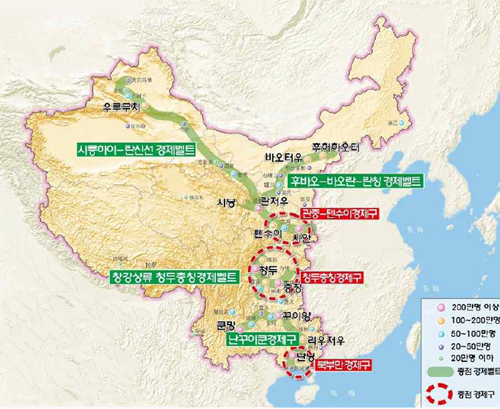 Since 1999, the Chinese government has been fully implementing the Western Development Strategy, the Northeast Region's Old Industrial Base Promotion Strategy, and the Central Region's Excavation Promotion Strategy to promote balanced regional development. Currently, China is developing 10-year national-level regional development plans and implementation plans for each region, as well as five-year plans for economic and social development at the national, provincial, municipal, and district levels, led by government departments and relevant organizations. In the future, the Chinese government will continue to promote the national-level '4+2 Regional Development Strategy' to promote balanced regional development. China's regional policies can be categorized into four stages over time: the balanced development stage of western expansion (1949-1978), the unbalanced development stage with an emphasis on the east (1979-1990), the nascent stage of regional balanced development with a focus on the midwest (1991-1998), and the full implementation of regional balanced development (1999 onwards). Prior to the reform and opening up, under the influence of the idea of equal development, large-scale western expansion occurred twice, during the First Five-Year Plan and the Third Five-Year Construction Period, while after the reform and opening up, under the influence of the idea of unbalanced development, efficiency and targets were emphasized, favoring the eastern coastal areas with good investment conditions, and rewarding the backward areas and ethnic minority areas. In the early 1990s, as the regional gap between East and West widened with the deepening of reform and opening-up, the Chinese government established a policy of regional balanced development, prioritizing the opening-up of coastal cities and inland border and customs cities in the Changjiang region, and promoting the rapid development of rural small and medium-sized enterprises in the central and western regions. After 1999, the country entered a new stage in the full implementation of the regional balanced development strategy, formulating the Western Development Strategy, the Northeast Region's Old Industrial Base Promotion Strategy, and the Central Region's Excavation Promotion Strategy to promote regional balanced development, and proposing the promotion of parking functional zones. In the 2000s, the growth rate of investment in social fixed assets in the Central and Northeast regions accelerated significantly, and the industrial layout shifted from concentration to diffusion. From 2001 to 2009, the investment in social fixed assets in the Northeast, Central, and Western regions increased at an average annual rate of 27.4%, 27.5%, and 26.1%, respectively, higher than the national average and the growth rate of investment in the East Coast region. With the accelerating economic growth in the Central and Eastern regions, the national economic activities are gradually being transferred and spread to these regions, and the East-West gap is narrowing. China's regional policy in the future will be based on the 4+2 regional development strategy, deepening the development of western regions, promoting all-round development in northeastern regions, promoting the development of central regions, and supporting the transformation and upgrading of eastern coastal regions. 4+2 regional development strategy: 4 is to carry out integrated strategic planning for the national economic layout and regional development according to the four regional frameworks of the West, Northeast, Central and East in terms of strategic planning. In the 12-15 plan period, the country continued to promote the development of the western region, fully promote the northeast region, and strongly promote the excavation of the central region. 2, in terms of policy coordination, is to promote differentiated regulatory and support policies according to the two types of major functional areas and key problem areas. According to the nature and severity of regional problems, problem areas will be classified by type, and a nationwide differentiated national regional support policy system will be implemented according to regional characteristics and immediate problems. Deepening the development of the West: The government will promote the strategy for the development of the West, attach more importance to social stability, expanding employment opportunities, and increasing citizens' practical benefits, and enhance the West's own development capacity and comprehensive competitiveness to promote sustainable and stable development. It will actively promote specialty industries such as energy and chemical industries and cities specializing in spatial layout. All-out promotion of the Northeast: The Northeast is facing many problems, including low industrial level, lack of private economic growth, underdeveloped service industry, high resource consumption, and large amounts of tertiary waste. Therefore, the government is looking for ways to promote the Northeast region by focusing on promoting robust industries, developing economic belts and urban areas, and shifting from investment to innovation. Promoting excavation in the Central Region: The Central Region is an intermediate region between the East and the West, with excellent resources, environment, capacity, and good economic development, and is a key region for the future transfer and inheritance of rural population and coastal industries. In the future, it will continue to build three bases and one base, strengthen the development of key areas with the formation of urban clusters as the core, and accelerate the promotion of industrialization and urbanization to promote the priority development of key areas. Supporting the transformation and upgrading of the eastern coastal areas: Since the reform and opening up, China's eastern coastal areas have maintained a continuous high-speed growth trend, especially the Pearl River Delta and the Changjiang Delta, which have been the main growth areas driving China's economic development. At present, the region's traditional mode of development with high resource consumption, high dependence on export markets, low industrial chains, low wages and low costs is being seriously challenged, and it is facing a leap to a new stage of economic transformation and industrial upgrading. Therefore, it plans to clarify the direction of transformation and upgrading and promote the sustainable development of urban areas. Initiatives to expand high-speed rail connections and exchanges between China, Japan, and Korea China's current regional policies are highly feasible, and Korean companies should take advantage of the growing demand for infrastructure, housing, and construction as China's regional balanced development is in full swing. As the Chinese government is likely to implement large-scale inflows of private capital and foreign investment, it is necessary to conduct thorough preliminary research in preparation for the signing of the Korea-China FTA and cooperation between the two countries in various sectors. In order for domestic companies to successfully enter China and settle down early, it is necessary to establish a differentiated, specific, and customized China entry strategy that responds to China's regional development policies. "For the northeast, central, and western regions, which are China's major growth areas, it will be necessary to accurately identify the industrial policies and urban development strategies of each region and prepare strategies for entry and settlement in China," said Kim Gim-koo, a research fellow at the Korea Land Institute's Land Planning Research Center. In addition, long-term preparations should be made for the expansion of direct exchanges with China's inland central and western regions through connections to the China High Speed Rail and the Korean Peninsula High Speed Rail. "In the future, the fifth national comprehensive plan should consider exchanges and linkages with China's Northeast and East Liaoning regions, as well as major urban centers in the Midwest," Kim added. |

|
 Home Intro
Home Intro




